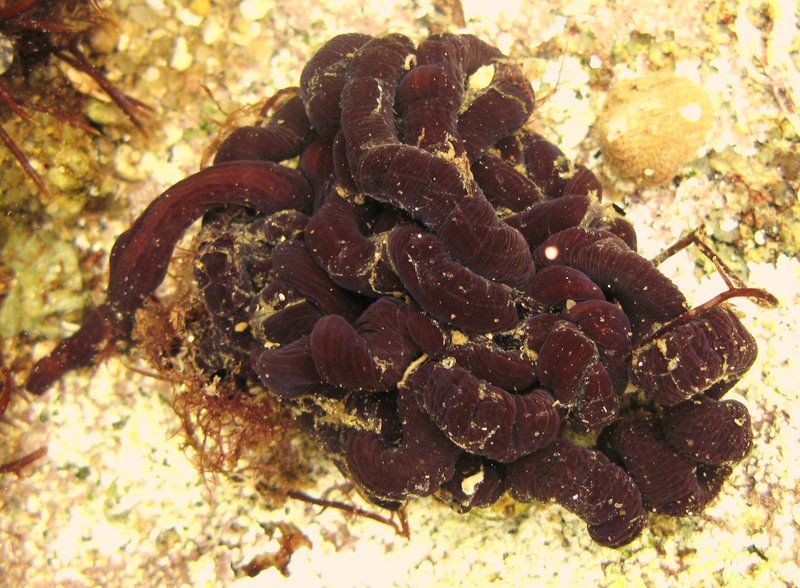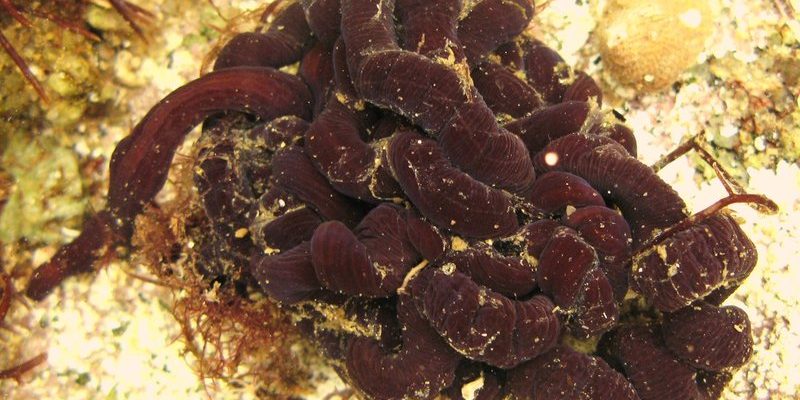
So, what exactly is a bootlace worm? These magnificent creatures belong to the group of animals known as **nemerteans**, also known as ribbon worms. With their long, slender bodies and vibrant colors, they truly stand out in their marine habitats. In this article, we’ll explore the biology, habitat, diet, and more of bootlace worms, diving into what makes them such intriguing members of the oceanic world.
What Are Bootlace Worms?
Bootlace worms are **marine invertebrates** found primarily in chilly waters like those of the North Atlantic. They’re known for their incredible length and flexibility, resembling a spaghetti strand more than your typical ocean dweller. Unlike many other creatures, bootlace worms have a unique way of moving. They don’t use fins or limbs; instead, they undulate their bodies, letting currents carry them along.
These worms are often brightly colored, featuring hues of red, yellow, or green. Their striking appearance can sometimes lead to confusion, as some people mistake them for sea slugs or other sea life. Did you know that bootlace worms can regenerate lost body parts? If they happen to lose part of their body, they can regrow it, which is nothing short of miraculous in the animal kingdom!
Physical Characteristics
Bootlace worms are not just long; they’re also quite thin, resembling a twirling ribbon. They can measure several millimeters in diameter, making their length even more astonishing. These creatures have a soft body covered in a slimy sheath that helps them move through their environment.
To thrive in varying ocean conditions, bootlace worms also possess a **proboscis**—a specialized feeding structure that extends out to capture prey. This organ is equipped with a sticky secretion that helps them snag small marine animals, like crustaceans and fish larvae. Picture a super-flexible vacuum hose, able to reach out and grab its next meal!
Where Do Bootlace Worms Live?
Bootlace worms make their homes in **marine environments** ranging from sandy bottoms to rocky coastal areas. You’re likely to find them buried a few inches beneath the surface of the ocean floor. They prefer cooler waters, which means they are often located in regions like the North Sea or around the British Isles.
Interestingly, bootlace worms are more commonly found in certain locations. Their presence varies based on seasonal changes. For example, during warmer months, they might be more prevalent near shorelines and can sometimes be spotted during low tides. Have you ever walked along the beach and wondered what lies beneath your feet? Next time, you might just find a hidden bootlace worm!
Habitat Preferences
Bootlace worms tend to thrive in environments rich in nutrients, which help sustain their diets. They often inhabit **muddy and sandy substrates**, where they can easily bury themselves. This preference for soft, pliable surfaces keeps them safe from predators while providing ample food sources.
You might be wondering how they adapt to these conditions. Bootlace worms possess specialized structures that allow them to anchor themselves in place when needed. This helps them avoid being swept away by currents, enhancing their chances of survival.
Diet and Feeding Habits
When it comes to food, bootlace worms are **carnivorous**, primarily feeding on smaller marine organisms. They use their proboscis to hunt and capture prey, extending it out to snatch up unsuspecting victims. Their diet typically includes:
- Small fish larvae
- Crustaceans
- Worms and smaller invertebrates
One interesting tidbit about their feeding habits is how they consume food. After capturing prey, bootlace worms can digest their meals externally before sucking the nutrients back into their bodies. This means they can break down food outside of their bodies, allowing them to process larger meals more efficiently. Isn’t nature fascinating?
Role in the Ecosystem
Bootlace worms play a crucial role in maintaining the health of their marine ecosystems. As predators, they help regulate the populations of smaller organisms, ensuring a balance within the food web. They themselves serve as food for larger marine animals, contributing to the chain of life in their environments.
Additionally, their burrowing activities aerate the ocean floor, which promotes healthy sediment and improves the habitat for other organisms. By doing this, they contribute to the overall health of marine ecosystems, making them essential players in their underwater communities.
Reproduction and Lifespan
Bootlace worms have a rather unique approach to reproduction. These creatures can reproduce both sexually and asexually, making them quite adaptable. When engaging in sexual reproduction, bootlace worms can release eggs and sperm into the water, where fertilization occurs.
Interestingly, if conditions are right, bootlace worms can also reproduce asexually by splitting their bodies. This means that even if they lose part of themselves, they can create a whole new individual. The ability to regrow and reproduce in this way allows bootlace worms to thrive in their environments.
Life Cycle
During their life cycle, bootlace worms go through several distinct stages. Once the eggs hatch, the larvae develop into free-swimming forms before eventually settling down and transforming into the familiar long, worm-like adults we recognize. This life cycle allows them to occupy different ecological niches as they grow.
The lifespan of a bootlace worm can vary significantly, but many live for several years, depending on environmental conditions. It’s impressive to think about how these remarkable creatures navigate life, showcasing resilience and adaptability.
Why Bootlace Worms Matter
You might be asking yourself, “Why should I care about bootlace worms?” Well, they’re not just fascinating in their own right—they also provide insights into marine biology and ecology. Understanding how they interact with their environment can improve our knowledge of marine ecosystems.
Moreover, their unique biological features, such as regeneration and diverse reproductive strategies, spark curiosity in scientific research. Studying bootlace worms might even lead to breakthroughs in medicine or environmental science. Their contributions to the ocean’s health and insights into evolutionary biology help us appreciate the complexity of marine life.
Conservation and Environmental Impact
Like many marine creatures, bootlace worms face threats from pollution, habitat destruction, and climate change. Protecting their ecosystems is crucial for their survival and the health of the oceans. Efforts to conserve marine environments will indirectly support these invertebrates and countless other species that share their habitats.
Being aware of our impact on marine ecosystems can guide our actions as individuals. Simple changes in our daily lives can contribute to the preservation of these mysterious creatures and their environments. After all, every little action counts when it comes to protecting the planet we live on.
In summary, bootlace worms are truly remarkable creatures that mystify scientists and ocean enthusiasts alike. Their impressive lengths, unique feeding habits, and vital roles in the marine ecosystem make them worthy of our attention. Whether you’re fascinated by biology, conservation, or just curious about the ocean, learning about these giant invertebrates opens a window into the complex world beneath the waves.
Next time you think about the ocean, remember these gentle giants and their incredible lives. The world is full of fascinating creatures waiting to be discovered, and bootlace worms are just one of many wonders swimming in the sea. So, let’s appreciate and protect their homes together!

